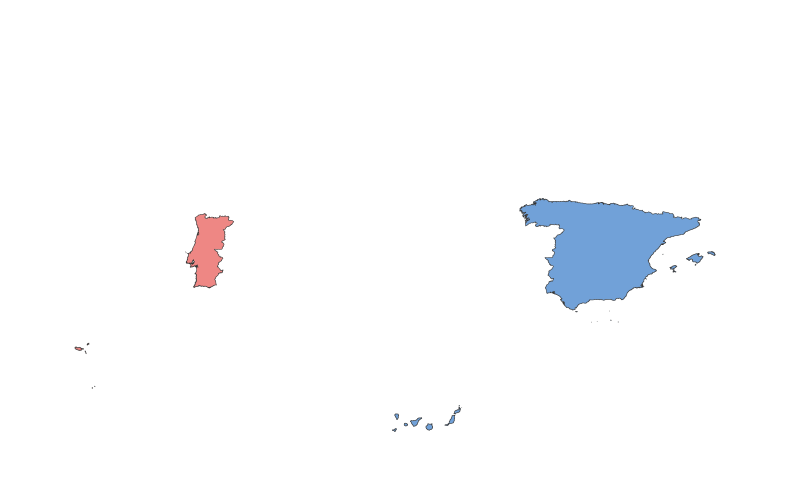Portugal vs. Spain: A Geographical Comparison

Comparison Table
| Category | Portugal | Spain |
|---|---|---|
| Location | Southwestern Europe, bordering Spain and the Atlantic Ocean | Southwestern Europe, bordering Portugal, France, Andorra, and the Atlantic Ocean |
| Size | 92,212 km² | 505,992 km² (larger than Portugal) |
| Climate | Mediterranean (south), oceanic (north) | Mediterranean (coast), semi-arid (central), oceanic (northwest) |
| Natural Resources | Fish, forests, minerals (tungsten, tin) | Coal, iron ore, copper, hydropower, fisheries |
| Urban Development | Lisbon, Porto (major cities) | Madrid, Barcelona, Valencia (major cities) |
| Transportation | Extensive road and rail networks; major ports (Lisbon, Sines) | High-speed rail (AVE), extensive highways; major ports (Barcelona, Valencia) |
Description
Portugal
Portugal, located on the Iberian Peninsula, is known for its rich maritime history and cultural heritage. Its economy is driven by tourism, agriculture (wine, olives), and fisheries. Portugal's climate varies from oceanic in the north to Mediterranean in the south, offering diverse landscapes from lush forests to sunny beaches. Historically, Portugal was a global maritime power during the Age of Discoveries, leaving a lasting influence in regions like Brazil, Africa, and Asia. Culturally, Portugal is famous for Fado music, traditional cuisine (e.g., bacalhau), and historic landmarks like the Belém Tower.
Spain
Spain, the larger neighbor of Portugal, boasts a diverse geography ranging from the Pyrenees mountains to the sunny coasts of the Mediterranean. Its economy is one of the largest in Europe, with strong sectors in tourism, manufacturing, and agriculture (olives, wine). Spain's climate varies significantly, from the arid central plateau to the rainy northern regions. Historically, Spain was a dominant empire with colonies in the Americas and the Philippines. Culturally, Spain is renowned for flamenco, bullfighting, and festivals like La Tomatina. Cities like Madrid and Barcelona are global hubs for art, architecture, and gastronomy.
Both countries share a deep historical connection, including the Reconquista and the Iberian Union, but maintain distinct identities in language, culture, and traditions.